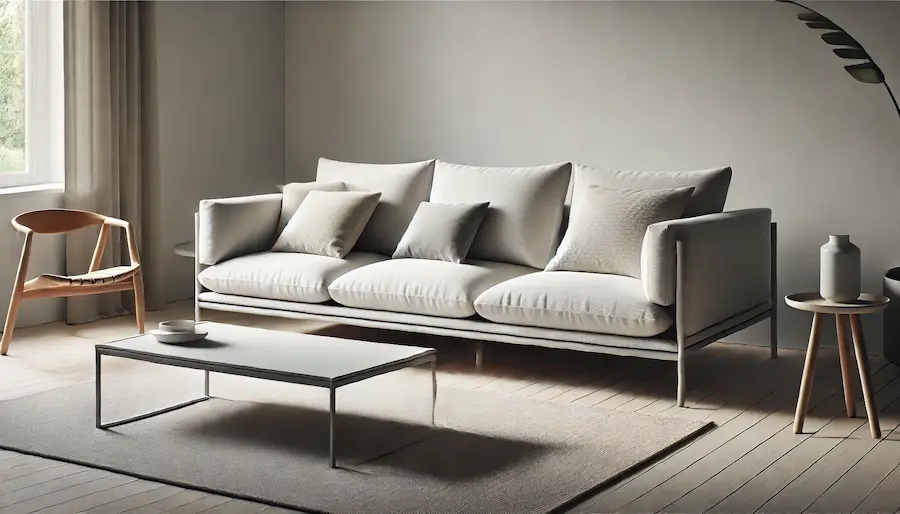Minimalist sofas epitomize the “less is more” philosophy, emphasizing simplicity, functionality, and clean lines. This article explores the essence of minimalist sofas, their historical context, defining characteristics, applications in modern interiors, and key considerations for selecting the perfect piece.
Introduction to Minimalist Sofas
A minimalist sofa is designed to offer comfort and utility without superfluous ornamentation. Characterized by sleek silhouettes, neutral color palettes, and an emphasis on form following function, these sofas integrate seamlessly into contemporary living spaces, promoting a sense of calm and order.
History and Origins of Minimalist Sofas
The minimalist design movement emerged in the mid-20th century as a reaction against the ornate styles of previous eras. Influenced by the Bauhaus and De Stijl movements, designers like Ludwig Mies van der Rohe and Gerrit Rietveld championed furniture that was both functional and aesthetically pared down. Their creations laid the foundation for minimalist furniture, including sofas that prioritize simplicity and practicality.
Key Features of Minimalist Sofas
Minimalist sofas are distinguished by several defining characteristics:
- Clean Lines: Straightforward, unembellished lines contribute to a sleek and uncluttered appearance.
- Neutral Color Palettes: Shades such as white, gray, beige, and black are prevalent, enhancing versatility and a tranquil ambiance.
- Functional Design: Every element serves a purpose, often incorporating modular components or built-in storage to maximize utility.
- High-Quality Materials: Emphasis on durability and comfort, utilizing materials like leather, linen, or high-grade upholstery fabrics.
Applications of Minimalist Sofas
Incorporating a minimalist sofa into various interior designs can achieve different effects:
- Modern Living Rooms: Serves as a focal point that complements open spaces and contemporary decor.
- Small Apartments: The uncluttered design helps make compact areas appear more spacious and organized.
- Office Spaces: Provides a professional and clean aesthetic suitable for reception areas or lounges.
Considerations When Choosing a Minimalist Sofa
When selecting a minimalist sofa, consider the following factors:
- Size and Proportion: Ensure the sofa’s dimensions align with your space to maintain balance and harmony.
- Comfort: Test the seating to confirm it meets your comfort preferences, as minimalist designs can sometimes be perceived as austere.
- Material Quality: Opt for durable and easy-to-maintain materials that withstand daily use.
- Versatility: Choose a design that can adapt to different decor styles, allowing for future interior updates.
Conclusion
Minimalist sofas embody the principles of simplicity and functionality, making them a versatile choice for various interior settings. By focusing on essential design elements and high-quality materials, these sofas offer both aesthetic appeal and practical comfort, aligning with modern preferences for uncluttered and harmonious living spaces.
